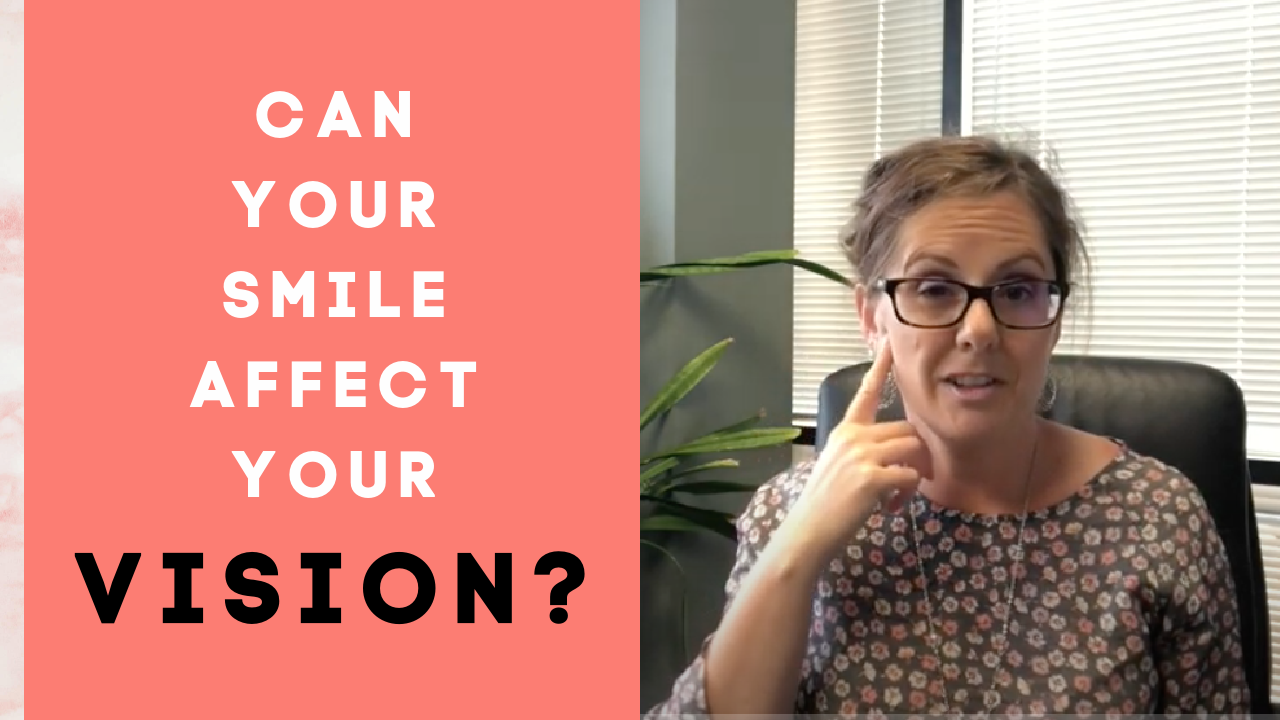We know teeth and jaw problems can cause headaches, but did you know they can also cause issues with your vision? This is because the various muscles and nerves in your head, face, neck, jaw and mouth are all connected. When people have a temporomandibular joint dysfunction, like in TMJ disorders, for example, they can experience jaw pain, locking of the jaw and trouble chewing. In addition, they may also develop vision issues. Since our bodies are comprised of interconnected parts, understanding the links between the motor and visual systems can be helpful when treating binocular vision problems.
Ideally, eyes that function properly and work together with overlapping fields of view offer good perception of depth – and healthy binocular vision. When the eyes do not work together, vision disorders can occur. Why do some teeth malocclusions and jaw problems influence binocular vision? The US National Library of Medicine cites that “a pathological condition in one area (of the body) can also affect other areas. In particular, the skeletal muscles play a decisive role in the coincidence of various disorders.” This can include vison issues.
In regards to TMJ, the connection is evident in a number of ways. Patients with temporomandibular joint disorders can experience pain and overall discomfort that can also cause headaches and migraines. Other conditions that can exist with jaw pain include:
- Blurred vision
- Trouble reading
- Eye stress/strain
- Watery eyes
- Light sensitivity
- Floaters in vision
- Pressure around/behind the eyes
The issues listed above can occur due to disturbances in the jaw and teeth, affecting vision. The trigeminal nerve, which connects the muscles in our face and neck, is the largest and most complex nerve (there are 12 cranial nerves). With three “branches” to this nerve (connecting to eyes and the jaw), any pain, disorder or disruption can wreak havoc. Think of it this way: if we have pain or decreased vision, a normal response would be to tilt the head or position ourselves in a different way, whether we lean forward to see the computer screen or clench our teeth. These actions are all connected.
The US National Library of Medicine also states that the eyes need to coordinate with the movement of the head and the neck when following an object. This musculature controlling eye movement is closely connected to the stomatognathic system (which is the system comprising the teeth, jaws and tissues). Ocular issues, like being nearsighted or farsighted, strabismus or convergence insufficiency can be linked to dental malocclusions.
Dr. Julie Steinhauer is a functional and developmental optometrist with a focus on restorative and rehabilitative vision, syntonic phototherapy and binocular vision conditions.
If you have TMJ or other dental conditions and notice changes in your binocular vision, contact Vison For Life to schedule an appointment with us at (618) 288-1489. You can also learn more about Vision For Life by visiting our website at https://visionforlifeworks.com/.
